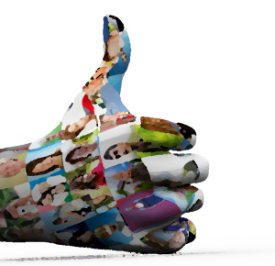FakeBook Effects on Recruiting

Paris-based analytics company Semiocast announced that Twitter now has 500 million users. However, its counting revealed that just 27% of account holders actually do anything on Twitter. That means, the “real” number is around 170 million.
On Facebook, nearing 1 billion users, they’ve announced that in an attempt to clean up their numbers they will be shutting down 83 million “dupe” profile accounts of fakers, pets, babies and companies who set themselves up as a profiles (meant for real people only), before Pages were available or before they knew how to set up a Page.
Now while the numbers are very different and its admirable that both Twitter and Facebook are attempting to do something about each discrepancy (although part of Twitter’s redemption came in the form of third-party Fake Follower Check Status People) I asked at the time what effect this would have on the myriad of recruiting applications that have sprung up based entirely or in part on one or the other of the networks.
Now, as I’ve stated before, over the last decade both recruiting AND HR are veering closer and closer to marketing and advertising (even as the latter are beginning to overlap with support), which means that when something gets them in a lather, our lot may want to pay attention. While this doesn’t merit changing everything about your social recruiting strategy, if your candidate attraction function relies heavily or in part on Facebook Ads or automated or promoted tweets, you should at least scan it and implement some changes.
Question your vendor- If you have a vendor that sold you the Facebook recruiting solution, go ahead and ask for some solid guidance on the subject. If they don’t know much about the recent reports and changes, then maybe you should keep shopping. Ask about rate changes, fake profiles and checks and balances when it comes to where your solution is advertising your jobs.
Reevaluate your numbers- If you have an impact score that you have accepted as norm, make sure your profiles, clickthroughs and ads are re-calibrated to adjust to the new numbers listed above. If you handled targeting correctly, chances are it won’t change too much but be prepared to be transparent in reporting when it’s shown that 10% of your ad views are cats. Note:
On Twitter the problem is probably far worse, since their new promoted accounts and promoted tweets (available as self-serve advertising to all business managers), may be targeting as much as 70% or more bots and inactive accounts.
Take a hard look at social recruiting consultants- If you’re paying someone with 30,000 Twitter followers train your recruiting team on social (perhaps willing to overlook their 18 months in actual recruiting for those eyeball scorching numbers?) and you find out that most of their followers were fake bots, would that change how you recruit your consultants? I sure hope so. For example, this blogger discovered that the nearly 400K followers of a vice president at Shop.com are 81% fake. Keep in mind a recent caveat that only allows this service to search the last 10,000 followers of any given Twitter handle.
Get your MarCom in check. PR and Communications is a huge part of recruiting, employment branding and vendor relations. So, are you paying attention to who you’ve selected as employment ambassadors? Are you relying on lazy public relations or that lots of followers equals lots of coverage? Don’t, says Toronto blogger Stephanie Fusco, a PR pro:
Not only do these numbers mean nothing, as we’re discovering again and again, but numbers don’t tell you who will be a good ambassador for your brand. The opinion of a blogger who shills for a different brand every minute means nothing. A blogger whose own personal brand is a mess, blog and Twitter rife with controversy and drama, is not a good fit for many clients, no matter their numbers.
How about you? Did the news of fake profiles, charlatan consultants and bots change the way you view your social recruiting strategy? I’d love to hear from vendors in the comments as well!

